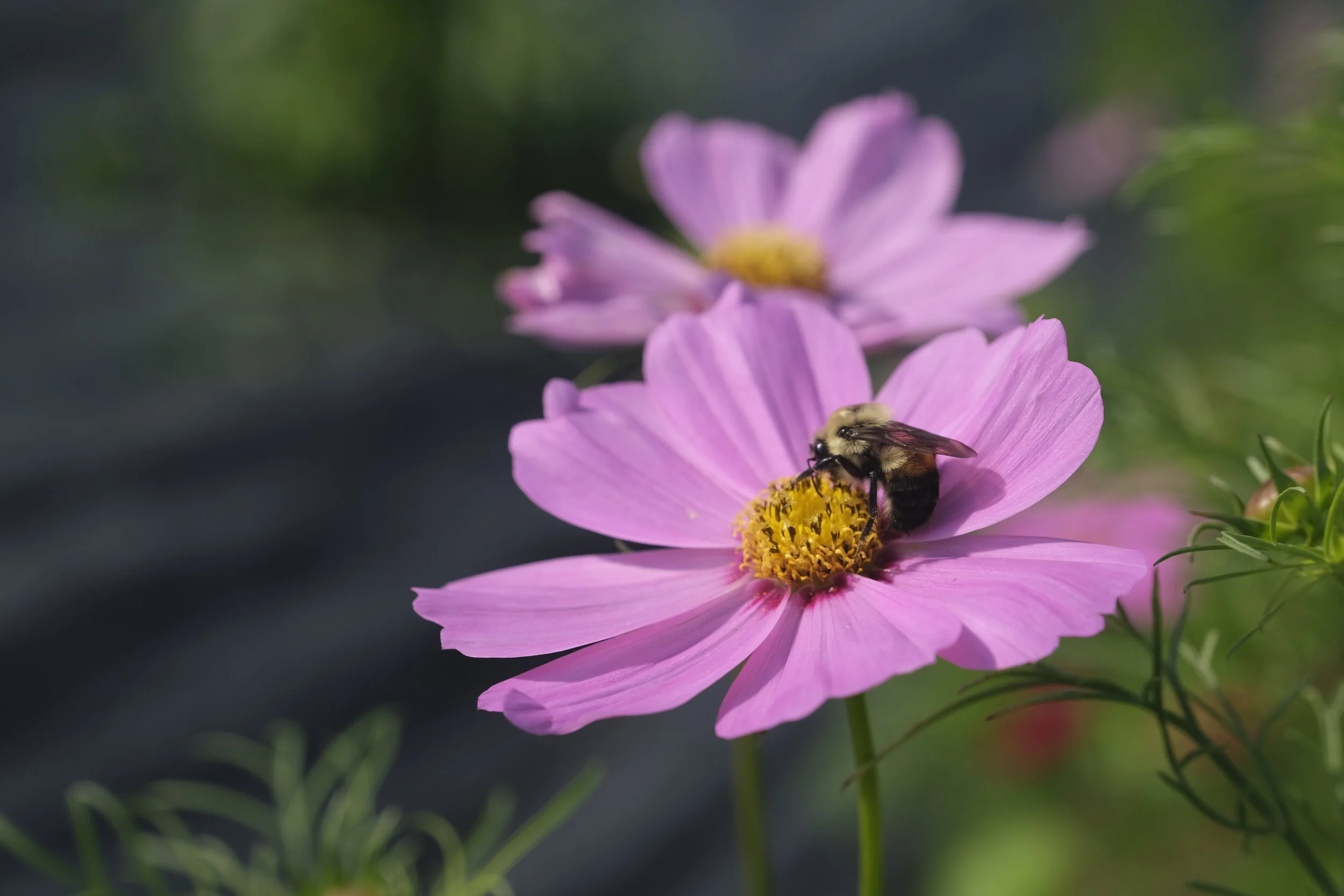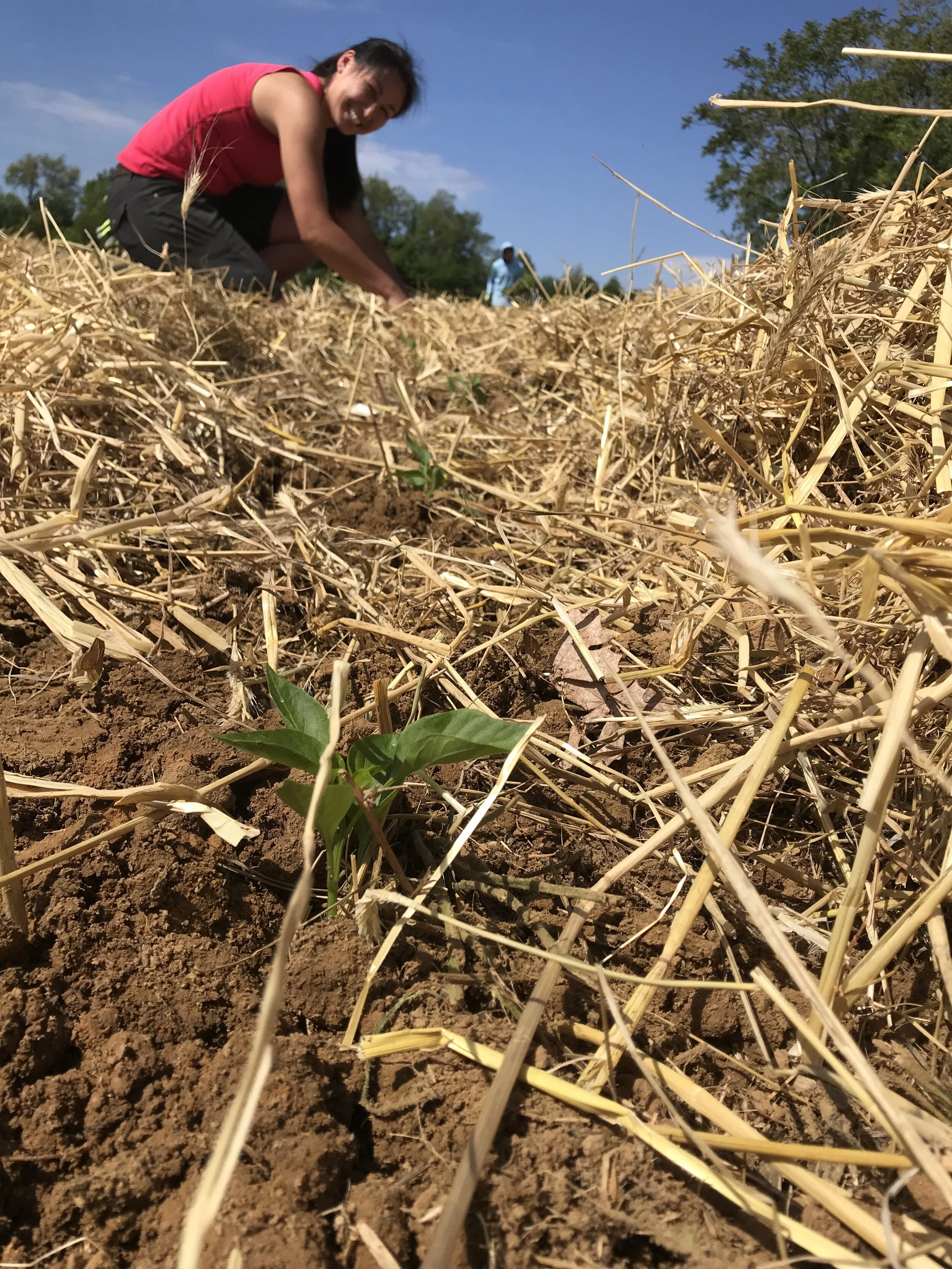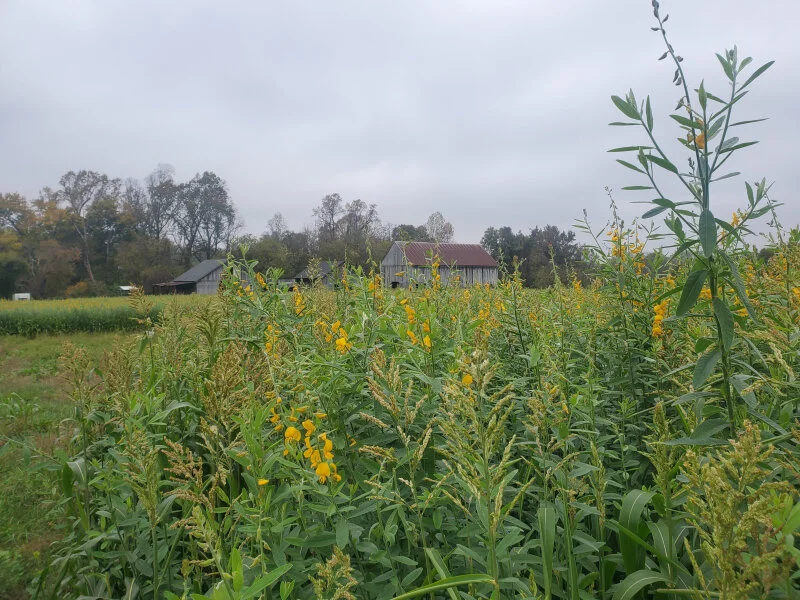CSA shareholder Precious Lewis sent us this gorgeous photo of an intrepid butterfly taking some quick sips of nectar from Tithonia flowers while Precious gathers her bouquet.
│ Announcements │ This Week’s Share │ U-Pick │ Recipe │ Coming Soon │
Announcements:
Featured farmer oyster sale
We’ll have another Featured Farmer oyster sale on Thursday, September 2 at the Annapolis pickup location with Pirates Cove Oyster Company. Visit piratescoveoysters.com/CBF to order.
At checkout, select “Pickup” as the order type, then choose “Chesapeake Bay Foundation Headquarters” as the pickup location from the dropdown menu. Select September 2, 2021 as your pickup date.
As news about climate change goes from bad to worse, we’re so glad to be part of this community. We’re making small changes together, and like so much of our life’s work, we are only a small part in a movement that will probably succeed or fail past our own lifetimes. Even still, our efforts matter, and we appreciate you.
Thanks to Loring Ingraham for coming up with a new name for the BHN tomatoes — Bohemian! This is the swan song for La Boheme. We don’t expect any large red slicing tomatoes in the share next week, so enjoy them while they last!
We’ll be selling our own farm’s ground beef at the Clagett Farm pickups beginning in the last week of September. We’ll sell it frozen in one-pound packages, $10 each (or $9 each for five or more).
This Week’s Share:
Tomatoes
Cucumbers
Garlic
Yellow onions
Squash
A green bell or ripe, sweet pepper
Choice of beans, okra, chilies, or tomatillos
U-Pick:
In our herb and flower garden behind the washing station:
Anise hyssop (licorice flavor; makes a nice tea)
Basil (Genovese, Greek, Thai, Round Midnight, Lemon, and Tulsi)
Cilantro
Garlic chives
Onion chives
Lemon balm
Mint
Oregano
Parsley
Sage
Shiso
Sorrel
Thyme
Flowers and ornamental greenery for your vase.
Blackberries (a few short rows to the right as you approach the CSA pickup)
In field G2, which is beside the parking area, next to the washing station:
Parsley
Lots of basil of various types!
Sunflowers, Zinnias, Cosmos, Gomphrena, and Tithonia
Recipes:
Have you made fresh salsa yet? It’s super easy, and with the addition of beans and a tortilla, you have a meal! Obviously, we can all buy salsa from a jar, but fresh salsa is a treat we can only enjoy in the summer.
You can make roasted tomatillo salsa by putting your tomatillos (husks removed), garlic, and chilies (any kind will work, but I highly recommend the poblanos) on an oiled, rimmed sheet pan under the oven burner. Broil until blackened, cool, then toss in the blender (juices included) with some onion, cilantro (or parsley if preferred) and salt. Add a little olive oil and lime juice if desired.
Fresh tomato salsa is even easier. Dice some tomatoes and add finely diced shallots (onions or scallions also work), minced garlic, finely chopped pepper (you could use a bell + a small hot chili or simply add one poblano; include seeds and the white ribs of the chilies if you want more heat), lime juice, and salt. Stir together and add more of any ingredients to your taste. If you don’t have lemon or lime, use vinegar.
We always need more ideas for how to use squash. Here’s a few:
This Epicurious recipe suggests grilling the squash and then marinating it in order to keep a better texture. Interesting idea!
This simple pasta recipe encourages you to sauté the summer squash slices until they’re “jammy,” and then mixing them with pasta, parmesan, and fresh basil. It calls for dried Aleppo pepper, which is mild and earthy. I think the red Anaheim peppers would be a good substitute, diced very fine.
Coming Soon:
Next week you’ll see a reduction in the pounds of tomatoes in your share.
Squash and cucumbers will continue through late August.
Red potatoes will return shortly.
Peppers should slowly increase in abundance and continue producing through early October.
You’ll continue to see a mix of different chili types each week through mid October. Those plants are doing quite well, so if you like chilies, be patient and you’ll be rewarded.
Tomatillos should stay steady for probably a month.
We’ll give out okra in larger portions in the coming weeks, but we’ll keep it optional. No one needs to take okra they don’t want.
Garlic until the end.
One set of green beans was eaten down by deer that found a low spot in the fence. Fortunately, an older planting revived. We might get one more picking from them.
The eggplants will keep producing all season, but there are still very few of them. We’re rotating it through the pick up sites, so we can’t tell you which weeks you’ll see it in your share.
We’ve found a way to pin down the groundhog traps more securely so the foxes don’t run off with them. I have high hopes for the sweet potatoes and winter squash. The final planting of watermelons probably won’t recover.
Thank you for Supporting our Farm!
CLAGETT FARM
Wednesdays, 3:00-7:00 P.M.
Saturdays, 1:00-4:00 P.M.
DUPONT CIRCLE DC
Wednesdays, 5:00-7:00 P.M.
ANNAPOLIS
Thursdays, 4:00-6:00 P.M.













































